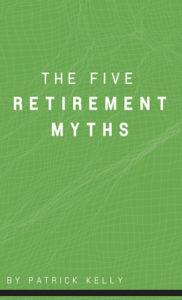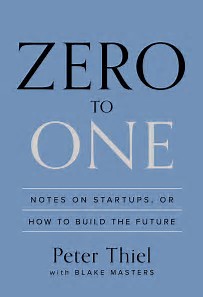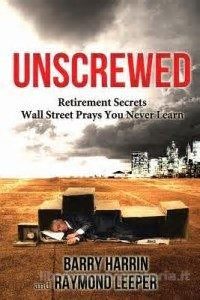
Are you ready for the spoiler? Here it is — McKnight suggests the Indexed Universal Life (IUL) policy is the best of the best. There is plenty more to the book, so it’s definitely worth the read. But essentially McKnight is writing about the IUL and why he believes it is the best strategy for growing and saving money in the 0% tax “bucket.”
The book is a quick read and packed with solid information. McKnight has a readable writing style and delivers his information in an accessible way for even the novice. At the same time, he presents plenty of lesser-known facts that give the more informed individuals a look behind the curtain. Discussing how stock options work is never easy, but McKnight made it look effortless.
So what does he have to say? Let’s take a look.
Do You Like the IRS?
McKnight starts off his book by stating that it’s a good retirement strategy to have some of your retirement assets in the 0% tax bracket. He says,
“If you’re skeptical about using life insurance as a potential retirement tool, let me simply say this: you don’t have to love life insurance or even life insurance companies, you just have to like them a little bit more than you like the IRS.”
He references his previous book, The Power of Zero, in which he described the benefits of having savings in the taxed, tax-deferred, and non-taxed “buckets” for retirement. His focus in that book was all about diversification and the power of having a portion of your retirement in a LIRP.
In this book he talk about the specific type of LIRP that he believes to be the best. But before presenting his case, he reminds the reader of the benefits of a LIRP.
LIRP Benefits
- No Penalties Pre-59 ½: Unlike retirement accounts like 401(k)s or IRAs, there is no 10% penalty if you take money out of your LIRP before you reach age 59 ½.
- No 1099s: The money within your LIRP doesn’t get taxed. Mutual funds and CDs do get taxed on their yearly growth.
- Distributions Are Not Reportable Income: Remember, if you take money out of your LIRP in the right way (policy loans and FIFO withdrawals), it doesn’t show up on the IRS’s radar as reportable income. This is why it is considered tax-free.
- No Contribution Limits: Unlike the Roth IRA, the LIRP has no contribution limits. The IRS only stipulates that the amount of your contributions be tied to your death benefit. You can contribute $100 a year, or $500,000 a year.
- No Income Limits: If your modified adjusted gross income is greater than $194,000 you can no longer contribute to a Roth IRA. No such rules apply to the LIRP.
- No Legislative Risk:
These benefits are associated with all LIRPs, but not all LIRPs are equally beneficial according to McKnight. He suggests that there are four attributes to look for in the best possible LIRP. (1) Safe and Productive Growth, (2) Low Fees, (3) Tax-Free and Cost-Free Distributions, and (4) a Cost-Free Long-Term Care Rider. According to McKnight, the IUL is the only one that can provide all four of these attributes.
Safe and Productive Growth
“It’s not enough for your LIRP to be safe. Remember, savings accounts are safe, but they’re a horrible way to fund your retirement. Most of the money you’re planning on spending in retirement hasn’t even been earned yet! We’re looking for a LIRP that can guarantee against market loss while at the same time delivering enough growth to make your retirement dollars last a lifetime.”
McKnight suggests that the IUL is uniquely able to provide both safe and productive growth, because of the rate floor and rate ceiling that is offered to the policy owners.
NOTE: Companies that offer IUL policies typically guarantee the owner of the policy a floor of 0% with regard to the market index of their choice (frequently the S&P 500). In addition they typically offer a ceiling, or cap, of around 13% of the gains of that index. If the market index return a rate of 7% for the year, that is what is credited to the policy owner. If the market index returns 20% for the year, the cap rate of 13% would be credited to the policy owner, not the full 20%. But also, if the market index returns a negative 40% in one year (2008 the S&P dove almost 39%), the policy owner would be credited 0%. In other words, they wouldn’t lose any money due to the crash in the market. This doesn’t mean that the cost of insurance might not cost the cash value to decrease in a bad year, but it does mean that the market loss has a floor of 0%.
Safety for McKnight just means that there is a floor to the market loss than can impact the policy owner. This type of safety rules out all LIRPs that are fully in the market, such as Variable Universal Life (VUL). McKnight acknowledges that IUL policies are not the only LIRPs with safety. We know that Whole Life offers guarantees that are better than 0%. But he does think they are the only kind with safety AND productivity.
Although Whole Life offers guarantees, McKnight argues that a policy needs to return at least 7% to be truly productive for retirement.
“if you can’t duplicate the IRA’s 7.5% growth in your LIRP, you risk offsetting the tax benefits that justify the LIRP’s existence in the first place. For example, if your tax-free LIRP grows at only 5% over time, you risk running out of money much faster than if you’d simply left your money in your tax-deferred IRA that’s earning 7.5%.”
McKnight references both the backtesting, and the actual data since 2000, that show that IULs have returned an average of 7.5% per year in the 20, 25, 30 or 40 year backtesting brackets.
NOTE: Averaging 7.5% per year without the possibility of a negative year is ALWAYS superior to averaging 7.5% with negative years included. Here’s why: $100 initial investment with a 50% gain year one, and a 40% loss year two. The result is $90. Which is a net loss of $10 or -10%, but the average return is actually 5% (50% -40% = 10%/2 = 5%). Compare that with two years of 5% gains on an initial investment of $100. End result is $110.25. Both have an average annual rate of return of 5%, but one is about 20% greater in value than the other because there are zero negative years.
Low Fees
“Whatever you pay to your life insurance company in fees comes with opportunity cost. Not only do you lose those fees, but you lose what they could have earned for you had you been able to keep them and invest them back into your LIRP. To get the productive growth we talked about in quality #1, it’s paramount that your LIRP have low fees.”
McKnight suggests that any LIRP that is of value as a tax-free bucket, needs to have fees that are no greater than a tax-deferred or fully-taxed bucket. Fees for IRAs have consistently averaged 1.5% per year. So a good LIRP needs to be in that range.
The problem with comparisons is the LIRPs are much more expensive during the early years, and IRAs are much more expensive in the later years. Here’s why: 1.5% of an IRA account of $1000 is just $150, whereas that same percentage of $100,000 is $1,500. LIRPs tend to average 1.5% or less, but only if you average them out over 20 or more years. In year 30 they may average .15% or less, but in the beginning years they are very high.
Pay attention to the fees associated with your LIRP, if they are much more than 1.5% over the long haul, look elsewhere.
Tax-Free and Cost-Free Distributions
“By definition, every LIRP allows you to take money out tax-free. But not every LIRP allows you to do so cost-free. In some cases, the expenses for taking money out of your LIRP can end up costing you more than the taxes the LIRP is saving you! To operate at optimal efficiency, the distributions from your LIRP must be both tax-free and cost-free.”
McKnight assumes that the money you are going to take out is going to be a policy loan, and therefore he says they are all tax-free. His point is directed at the interest rate the insurance company is going to credit vs. the interest rate that is charged for the loan.
Policy Loans Explained
When you want to take money from your policy, you call the company and ask for the sum of money you want (within the limits of what you have in cash value available). “They take $10,000 out of your growth account and put it into a loan collateral account where it earns a rate of interest.” And they also send you a check for the $10,000 as a loan. Because it is a loan, they charge you an interest rate, let’s say 5%. In addition, the growth account is also credited 5% annually. When you die, the money in the growth account is used to pay back all the outstanding loans. If the two were always charged and credited at the same rate, the two amounts will be the same. This is essentially a cost-free distribution.
However, if you are credited 3% but are charged 5%, you will owe 2% more than you were charged (a 2% net loan provision). In this situation, your cash value can actually decline if you don’t offset it by deposits or index growth.
“To the casual observer, 2% or 1% net loan provisions seem tiny, even insignificant. But the damage they can inflict over a 30-year period of time can be catastrophic.”
McKnight does mention variable rate loan provisions and the possibility of gaining positive arbitrage with policies that have this feature. He explains as follows:
“Instead of crediting your loan collateral account at 3% (like with the traditional no-cost loan), the company credits whatever your index happened to earn that year. For example, if you were to have a successful year in which you maxed out your 13% cap, they would actually credit your loan collateral account at 13%! On the flip side, the insurance company has to charge you something for the loan (as with the traditional no-cost loan), or the IRS will cry foul. The rate they typically charge can vary, but most companies currently charge between 5% and 6%.”
The result of the scenario described above, is that your earn 7% on the loan amount because the growth account is credited 7% more than the loan amount is charged. This results in positive arbitrage. If historically companies are charging 5-6% and the average IUL is earning 7.5%, then you can earn 1.5% in positive arbitrage for taking out a loan. For this reason, McKnight is a huge fan of variable loans. Keep in mind that the variable nature also means that some years you can have a 0% credit to your growth account, so there is some risk involved.
Cost-Free Long-Term Care Rider
“A long-term care event is arguably the worst thing that could happen to you in retirement. In fact, you’re better off dying than needing long-term care (at least from a financial perspective). So, consequently, everybody loves the idea of having long-term care insurance. However, nobody loves the idea of paying for something they hope they never have to use. The right LIRP gives you cost-free long-term care protection without the heartburn of being locked into a use-it-or-lose-it proposition.”
McKnight finishes his recommendations by suggesting that a good LIRP has a no-cost Long-Term Care Rider available. He stresses the issue, and explains what happens when a Long-Term Care event happens to a couple.
“Your wife becomes the ‘community spouse’ and is forced to spend down your estate until she’s left with just one house, one car, a Minimum Monthly Maintenance Needs Allowance (MMMNA), which in most states averages around $2,500 a month, and $119,220 of cash. Then and only then will the Federal Government step in to pick up the bill.”
For those that think they won’t need any Long-Term Care McKnight mentions that “there’s a 70% chance that at least one spouse will suffer a health event that requires long-term care.” And that “the average cost of long-term care is between $7,000 and $9,000 per month.”
So how do Long-Term Care Riders work?
There are two main types of Long-Term Care Riders, the kind you pay for, and the kind you don’t. McKnight seems a bit glib on the point here, but he is completely accurate in his description.
The Long-Term Care Rider you pay for works like this: You call up the company and say you want this rider. Upon issue of the rider, your cost of insurance goes up. In other words, you pay more in premiums each month. Down the road, if you have a Long-Term Care event, here’s how you it would work: “Let’s say you have a $400,000 death benefit. You wake up one day and can no longer perform 2 of the 6 activities of daily living. If you can find a doctor who can write a letter to that effect, you’ll start receiving 2% of your death benefit, or $8,000 per month, each and every month for 4 years.”
That may seem great, but what if you happen to be one of those 30% of people that don’t need Long-Term Care? The additional cost in premium each month can be a bitter pill to swallow. So what about the Long-Term Care Rider that you don’t pay for? How does that work?
McKnight explains,
“You have a $400,000 death benefit and want to spend this money while you’re alive for the purpose of paying for long-term care. The company will still calculate 2% of your death benefit, but before mailing you that check, the amount gets discounted.”
The discounted amount, according to McKnight, is typically your age converted to a percentage. In other words, if you’re 75 years old, you would get 75% of the amount per month (75% of $8000 is $6000). Companies offer these riders for “free” for marketing reasons, but also because they are able to offset the costs by discounting the payable amount.
No Such Thing as a Free Lunch
McKnight concludes this section of the book by stating that you will pay for whatever method you choose and typically you’ll pay 1.5% on average for whatever path you take. But he argues for some critical thinking about your return.
“You just have to evaluate what you’re getting in exchange for that 1.5%. In the IUL, you get safe and productive growth, tax-free and cost-free distributions, and a death benefit that covers your neck in the event you should need long-term care. Talk about making your 1.5% work hard!“
In his last two chapters of the book McKnight gives some additional food for thought. He suggests a sort of checklist for any IUL that is to be considered. And finally he addresses the most common myths associated with IULs. I’ve listed the checklist and the myths below, but you’ll have to get the book to see them explained.
IUL Checklist
- Guaranteed 0% Loans
- Caps on Variable Loan Interest Charges
- Interest in Arrears
- A Stable Index Cap Rate
- A Financially Stable Company
- An Over-Loan Protection Rider
- Daily or Weekly Sweeps
Top IUL Myths
- Be Wary of Overly Optimistic IUL Illustrations!
- Flexible Index Caps Should Have You Thinking Twice about IULs
- Avoid IULs Because of Non-Guaranteed Insurance Expenses
- Beware of the IUL’s Non-Guaranteed Death Benefit
- The IUL Has High Fees!
- Taking Loans from an IUL in a Flat Market Is Risky
- The IUL Shifts the Risk of Growing Cash Value to the Policyholder
- The IUL’s Minimum Interest Rate Guarantees Are Smoke in Mirrors
- You Risk a Huge Tax Bill Should Your IUL Run out of Money Before You Die
- Variable Loans Could Sink Your IUL Ship
Wrap-Up
In Look Before You LIRP David McKnight provides a compelling argument for a properly structured life insurance policy as a retirement savings tool — specifically the Indexed Universal Life product. Those of us at Insurance & Estates know well the value of LIRPs and we help both individuals and families find their way toward a peaceful and secure financial retirement using a variety of products and services.
Every family has unique needs and desires and one size does not fit everyone. So if you have questions or concerns, contact us so we can answer any questions that you may have. And don’t hesitate to pick up the book by David McKnight, it’s well worth your time.





